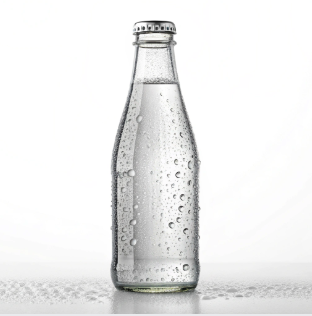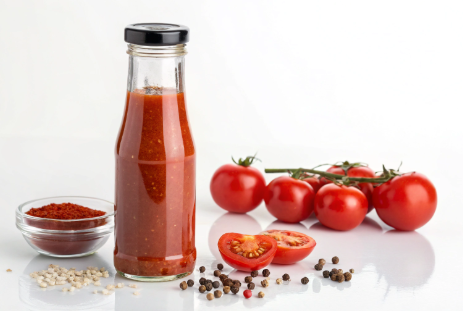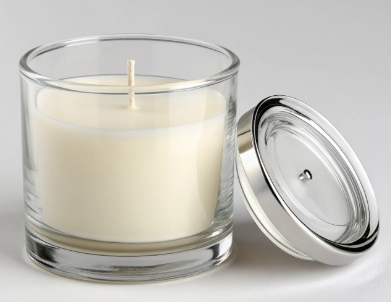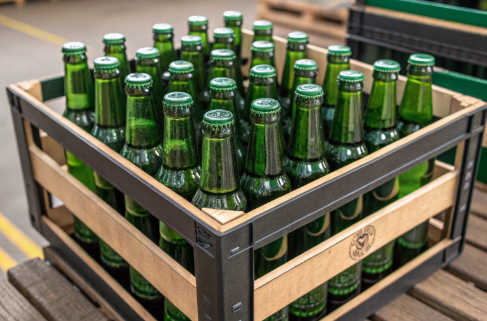A glass of soda is a carbonated beverage consisting of carbonated water and sweeteners and flavorings. Among the world’s favorites, soda is found in dozens of varieties including cola, lemon-lime and orange. Well, they throw ice or a lemon wedge in it to give it a ‘fresh taste’. Soda is everywhere, at restaurants, parties and stores. For more on soda selections, serving suggestions and nutrition details, the post below dishes.
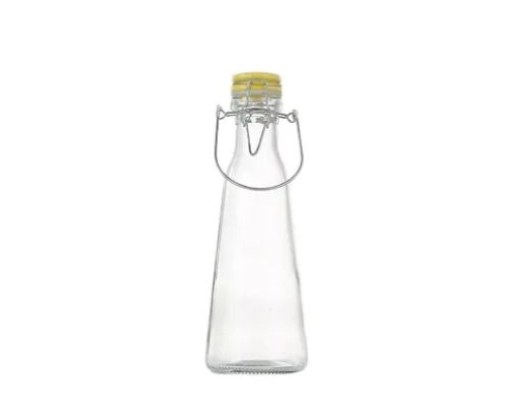

The Purity of Glass Soda
Glass soda bottles are unique in their chemical durability, which preserves soda’s safety and purity of flavor. Glass is an inert, non-porous material. It won’t react with soda or let other stuff in, so you get the same flavor every time you drink. Because glass doesn’t mingle with the beverage, it prevents external aromas or flavors from leaking in, as some plastics or metals can. That’s why so many of us comment that soda just tastes better from glass.
Glass also ensures the soda’s purity because unlike plastic bottles, glass does not leech out any harmful chemicals such as BPA or phthalates. These chemicals can leech into drinks, particularly if heated or stored for extended periods. With glass, soda makers don’t have to fret about undesirable things leaching into the soda. That’s what makes glass the safer choice for purity-minded people.
Glass is made from simple, natural components that each help keep soda fresh and tasty:
-
Silica (sand):Gives glass its strength and keeps it clear. It doesn’t alter the flavor or aroma of soda.
-
Soda (sodium carbonate):Lowers the melting point so glass can be shaped. It doesn’t react with the beverage.
-
Lime (calcium oxide):Makes glass tougher and water-resistant, stopping leaks or cracks.
-
Minor additives:Control the color and chemical stability, which keeps the glass safe for drinks.
Sealedglass bottlesare fantastic at holding in carbonation. The airtight seal and brick-thick walls prevent carbonation from escaping, so soda stays crisp and fresh for much longer. This, of course, does wonders to preserve the taste and mouthfeel of the beverage, as carbonation is soda’s lifeblood.
Soda-lime glass in bottles is tested for its hydrolytic class, which indicates its resistance to leaching in water. This is important as improved chemical durability translates to reduced likelihood of glass altering the soda’s purity. Glass is simple to recycle, which cuts down on waste and keeps the entire process nice and pure and uncomplicated.
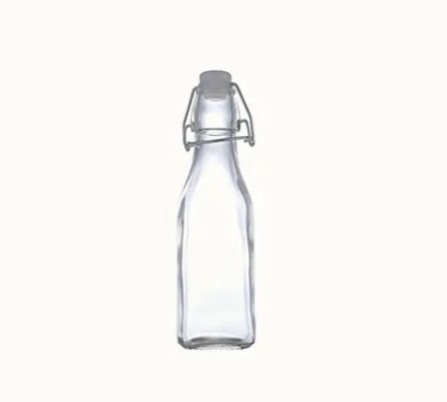

Sensory Experience Amplified
A glass of soda is about more than flavor, it’s a sensory experience of sight, sound and touch that defines the whole drinking moment. Transparentglass bottlesdisplay the full depth of color and effervescence of the soda. The glass’s transparency allows you to observe the effervescence, bubbles and even light diffraction through the liquid. This transparent appearance causes the beverage to taste fresh and crisp. The bottle’s slick sensation and icy temperature help, too, making every swallow a little more sensory than one from a can or plastic.
The fizz and bubbles are not just a visual effect. They attract the eye, as they soar and explode overhead. They snap, crackle and pop — the minute you open the bottle. THAT is music to my ears. Research reveals it can influence what consumers anticipate from the beverage—including how cold or carbonated it tastes. A louder pop or faster fizz of bubbles makes the soda seem more carbonated, and the slower gurgle as you pour can even elicit happiness or nostalgia.
Drinking from glass soda bottles creates a chain of sensory steps:
-
Visual: See the clear glass, the moving bubbles, the rich color.
-
Sound: Hear the sharp pop when opening, the fizz as it pours, the gentle crackle.
-
Touch: Feel the cool glass, the smooth surface, the shift in temperature.
-
Taste and Smell: Notice how the bubbles hit the tongue, how smell ascends.
-
Emotion: Small details, like the sound of pouring, can spark memories or joy.
Sensory play isn’t just for kids. Even for grown-ups, we can elevate these moments in our day by tuning into subtle hints–the sound of bubbles, the coolness of glass. Each element, from the way a bottle tastes to the sound it makes, contributes to transforming an ordinary soda into something special – a complete, satisfying experience.
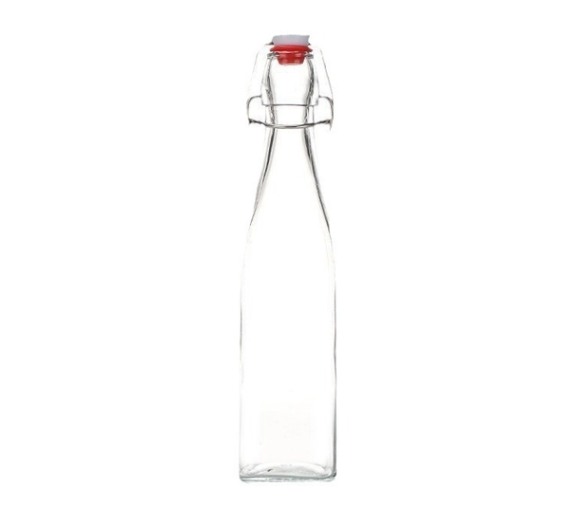

Glass vs. Other Containers
Glass is notable for soda because of its thermal strength. Glass keeps drinks cold longer. That’s because glass is non-porous and non-reactive, so it delays heat from the air to your soda. Borosilicate glass, which is less common than soda-lime glass, resists thermal shock much better. It manages abrupt hot or cold temperature shifts without cracking, from -80°C up to 260°C. This renders it robust for both cold and hot beverages. Borosilicate, which has a Mohs hardness of 7.5, surpasses soda-lime glass in toughness. Still, soda-lime glass is the standard choice for soda bottles, accounting for 90% of glass food and beverage containers. That’s because it’s cheaper; borosilicate costs up to 80% more, so it’s uncommon outside of labware or high-end bottles.
There’s one more advantage to the look of aglass bottle. Glass allows brands to flaunt it, with transparent, polished surfaces and imprinted logos. Glass has weight and presence, it conveys quality—many beverage companies employ designer-shaped bottles as a component of their branding. This sort of packaging pops – both on a shelf and in ads. Glass is non-toxic, so it won’t leach chemicals or taste into the beverage. You taste sodas, not containers.
For the planet, glass helps reduce waste. It’s 100% recyclable and can be remade into new bottles repeatedly. Unlike plastic, glass doesn’t degrade into micro-particles or leach into the food chain. This equals less trash in landfills and less damage to animals.
|
Material |
Taste Profile |
Recyclability |
Chemical Leaching |
Durability |
|---|---|---|---|---|
|
Glass |
Clean, unchanged |
High |
None |
High |
|
Plastic |
Can alter flavor |
Moderate |
Possible |
Moderate |
|
Aluminum |
Slight metallic note |
High |
None |
High |
The Psychology of Perception
How we perceive a glass of soda is more than the beverage itself. The pure-glass look influences perceptions of premium and fresh. With glass, consumers can observe the bubbles, the hue and the colors reflecting in their drink. This stuff makes soda taste crisp and fresh. We prefer drinks in glass to plastic. Glass is heavy and slick, so it has that solid, premium sense. This phenomenon, known as sensation transfer, causes the sensation of the glass to alter individuals’ perception of the soda’s flavor. If the glass is thick and the shape nice, people tend to assume the beverage inside is more special.
Glass bottlesremind a lot of people about nostalgia. Nothing like the pop of aglass bottleopening or the sound of soda poured into a glass to bring back childhood or family moments. That nostalgia leads some purchasers to select glass ahead of cans or plastic — even at a higher price. The shape of the bottle is a factor as well! A tall, skinny glass bottle makes the drink feel larger. The color and weight of the bottle alter peoples’ perception of the drink’s worth and flavor.
Packaging influences the way we anticipate a drink to taste. Glass is associated with premium brands and craft sodas, therefore, people believe beverages in glass will taste a lot better and be more valuable. The silky lustre and transparent appearance of glass reinforce this concept. Even the noise of a beverage being poured from glass impacts—consumers will believe the soda is more sugary or fizzy.
-
Transparent glass allows consumers to view the beverage, influencing premium perceptions.
-
Weightier glass seems more expensive, so they appreciate the beverage.
-
Glass bottles sounds (pop, pour) evoke memories or signify quality.
-
Bottle shape can make the beverage appear larger or more thirst quenching.
-
Smooth or textured glass shifts how we anticipate the soda will taste.
-
We associate glass with celebration or nostalgia, which only increases its allure.
-
Personal history, culture, previous brand experience, all molds these perceptions.
Designing the Perfect Glass
Design for a soda glass goes beyond appearance. It’s about how the glass feels in your hand and how effortless it is to lift, hold and sip. The curve of the rim, the weight at the base, the way the neck fits your grip–all these things count. A nicely engineered glass makes pouring easier and spills less frequent. Ergonomics count, be it a tall glass for a sparkling cola or a short, potent tumbler for a lemon soda. Sturdy bases prevent tips. Bottles with a soft taper or a formed grip allow you to effortlessly pour and share – perfect for hectic coffee shops or massive parties.
Appearance matters a lot as well. The color of the glass makes soda POP or cool and fresh. A transparent, vibrant glass highlights bubbles and hue, increasing allure. Distinctive shapes — be it a curve, flare or thick bottom — attract attention and distinguish brands. Others feel luxurious, like crystal-clear brilliance or a frosted coat. This can make any old soda taste special! The visual aesthetic of a glass can even influence how we perceive a beverage’s aroma and flavor.
Durability is a primary concern. Innovations in glassmaking, such as borosilicate or tempered treatments, assist glasses resist impact and temperature while maintaining their sleek, pristine appearance. This is great for hotels and restaurants where glasses get banged about a ton. Some glass is thick and tough, yet still appearing classy on any table. The perfect combination of resilience and fashion assist reduce expense and waste, which international customers enjoy.
Key design points for carbonation retention:
-
Use thicker walls for insulation
-
Narrow mouths slow gas escape
-
Tight-fitting lids or closures
-
Smooth inner walls stop bubbles sticking
-
Shorter, compact shapes keep fizz in longer
The Unseen Environmental Edge
The invisible ecological advantage it’s frequently about the tiny, incremental shifts that mold life and legacy. Glass may be only one soda container, but it’s where the real green benefits lie! It consists primarily of sand, soda ash and limestone – all natural occurrences. Glass is endlessly recyclable with no degradation in quality. This loop results in less landfill-bound rubbish and less demand for virgin raw product. The energy saved by recycling glass rather than creating new glass from raw materials is substantial. Recycled glass is melted at a lower temperature, which has the net effect of putting less carbon into the atmosphere. That aids in keeping the carbon footprint down, critical as more locations attempt to purify their air and water.
|
Feature |
Glass |
Plastic |
|---|---|---|
|
Recyclability |
100%, no loss in quality |
Often downcycled, loses quality |
|
Carbon Footprint |
Lower, esp. with recycling |
Higher, fossil-based |
|
Shelf Life |
Long, no leaching |
Shorter, can leach chemicals |
|
Pollution Risk |
Inert, doesn’t break down into toxins |
Microplastics, pollution risk |
Glass bottlesand jars even endure for years. This extended shelf life means less waste, because glass never breaks down or warps. It maintains the soda fresh and protected, with no chemicals sneaking into the drink. The absence of microglass is a victory for the earth. In countries such as France, with more than 322,000 polluted places listed, switching to glass can contribute to reducing plastic waste and its threats to both land and water.
Around the globe, abandoned industrial zones and derelict space provide an opportunity for it to spring to life again. Urban wastelands can become new habitat for plants and animals when ignored. Employing more glass, which is safe and equally easy to recycle, aids this. Trying to restore lands damaged by contamination or habitat loss or climate change is complicated, but even small, immediate decisions like opting for glass paint a tangible impact.
Conclusion
Sipping soda from a glass is crisp and real. Every icy sip is memorable. Glass keeps taste sharp and clean, no ‘funny’ smells or flavors. The weight in your hand just feels right. Sunlight strikes the bubbles and shimmers the color. Glass rocks for preserving soda’s freshness and chill. It helps reduce waste. A lot of people choose glass for both the appearance and the tactile experience.Glass bottlesfunction in bustling bars and at calm kitchen tables. They just go anywhere, any gathering. For anyone who craves the real soda flavor, glass delivers. Like to check out the specs or score more tips? Contact us for a complete guide or request a design that fits you.
Frequently Asked Questions
Why is soda often served in glass containers?
Glass retains the true flavor and fizz of soda. It doesn’t react with the beverage, so every sip is pure and fresh.
How does glass enhance the sensory experience of soda?
Glass lets you see the color and bubbles of soda. It additionally offers a slick surface that’s nice to hold and sip from.
Is soda from glass containers safer than from plastic or metal?
Yep, glass doesn’t leach any chemicals or flavor into soda. It keeps the beverage fresh and tasting like the maker wanted it to.
Does glass packaging have environmental benefits?
Indeed, glass is 100% recyclable and can be recycled endlessly without loss in quality. This minimizes waste and encourages a circular economy.
Can the shape of a glass affect soda taste?
Indeed, the shape of the glass can affect aroma and carbonation retention. There is something to be said for a nicely poured glass of soda.
Why does soda taste different in glass compared to plastic or cans?
Glass leaches no compounds. Plastic and metal containers can change the flavor, but glass keeps soda the same.
Is glass a healthier choice for drinking soda?
Glass is inert and BPA-free. Which is why it’s a safer and more sustainable way to savor soda globally.




